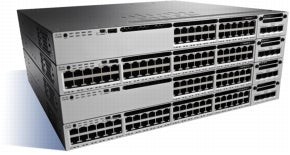For the most part, wired and wireless networks on the enterprise campus have been two separate entities controlled by different technologies. That’s about to change, thanks to a new suite of Unified Access technologies announced today by Cisco. At the core of the Cisco announcement is new silicon that will enable the convergence of wired […]
For the most part, wired and wireless networks on the enterprise campus have been two separate entities controlled by different technologies. That’s about to change, thanks to a new suite of Unified Access technologies announced today by Cisco.
At the core of the Cisco announcement is new silicon that will enable the convergence of wired and wireless traffic. The Cisco Unified Access Data Plane (UADP) is an ASIC that has up to 1.4 billion transistors on it. Cisco has invested over $100 million in research and development to bring the UADP to market.
“The UADP has high performance and it’s also programmable,” Inbar Lasser-Raab, Senior Director of Enterprise Networking Marketing at Cisco, told Enterprise Networking Planet. “It also supports the open APIs of the Cisco ONE environment, so you can do some really interesting applications with it.”
Cisco ONE is the Software Defined Networking (SDN) approach that Cisco first announced in June 2012. With Cisco ONE, the underlying networking hardware can be abstracted via APIs to enable software defined control across a network.
The UADP ASIC is being first deployed on a pair of new hardware appliances. One of them is the Catalyst 3850 Unified Access Switch, which includes a wireless network controller.
“For the first time, we have single network solution that brings together wired, wireless with high-performance and the same set of features across both types of access,” Lasser-Raab said. “So it’s not just a single physical infrastructure for wired and wireless, it’s also the same set of network intelligence like QoS, network visibility and control.”
The Catalyst 3850 includes two of the new UADP ASICs to power both wired  and wireless traffic. The 3850 can be configured with to 48 ports and multiple boxes can be stacked to deliver up to 480 Gbps of stacking bandwidth. The switch also support the PowerOverEthernet Plus (PoE+) 802.3at standard, enabling up to 30w of power transfer per port.
and wireless traffic. The 3850 can be configured with to 48 ports and multiple boxes can be stacked to deliver up to 480 Gbps of stacking bandwidth. The switch also support the PowerOverEthernet Plus (PoE+) 802.3at standard, enabling up to 30w of power transfer per port.
On the wireless controller side, the Catalyst 3850 series can support up to 50 wireless access points and 2000 wireless clients on each switch.
While the Catalyst is all about combining wired and wireless control in a single box, Cisco figures there are still use cases for a standalone controller as well. The Cisco 5750 Wireless LAN control is powered by a trio of UADP ASICS and delivers 60Gbps of capacity. Lasser-Raab noted that different customers have different needs and that’s why Cisco is debuting a standalone controller. She noted that the 5750 is the most scalable Cisco wireless controller ever built with support for up to 1,000 access points.
Both the 5750 and the 3850 are powered by Cisco’s IOS-XE operating system. IOS-XE in turn is based on the open source Linux operating system, which Cisco has enhanced over the years to support enterprise networking requirements.
“The beauty of that is we’re now using a consistent version of IOS for both wired and wireless access, providing the same capabilities across the solution,” Lasser-Raab said.
Sean Michael Kerner is a senior editor at InternetNews.com, the news service of the IT Business Edge Network, the network for technology professionals Follow him on Twitter @TechJournalist.

Enterprise Networking Planet aims to educate and assist IT administrators in building strong network infrastructures for their enterprise companies. Enterprise Networking Planet contributors write about relevant and useful topics on the cutting edge of enterprise networking based on years of personal experience in the field.
Property of TechnologyAdvice. © 2025 TechnologyAdvice. All Rights Reserved
Advertiser Disclosure: Some of the products that appear on this site are from companies from which TechnologyAdvice receives compensation. This compensation may impact how and where products appear on this site including, for example, the order in which they appear. TechnologyAdvice does not include all companies or all types of products available in the marketplace.